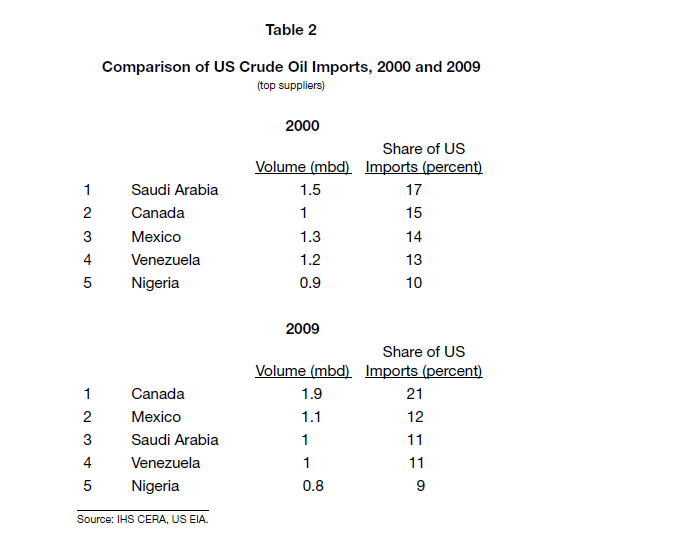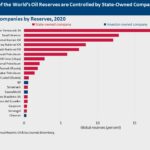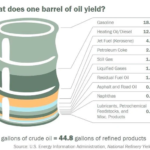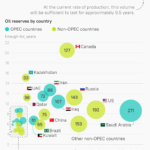The BP Deepwater Horizon oil spill has triggered outrage among the general public and may lead to heightened regulatory environment for the offshore drilling industry. Already the Obama administration has suspended shallow-water drilling in the Gulf of Mexico until producers resubmit plans to meet the revised safety and environmental rules. In the months and years to come additional restrictions may be put in place to prevent future disasters and potentially increasing the cost of oil exploration. In this scenario, Canada’s oil sands to the US oil supply attains greater importance.
Renowned consultancy IHSÂ CERA recently published a report titled “The Role of Canadian Oil Sands in U.S. Oil Supply”. Some of the key takeaways from this report are noted below:
“Geography has made us neighbors. History has made us friends. Economy has made us partners. Necessity has made us allies.â€
—John F. Kennedy, Address Before the Canadian Parliament in Ottawa, May 17, 1961.
- The growth potential of Canadian oil sands as a source of US oil imports is three to four times higher in 2030 than in 2009
- Due to the high cost of alternative fuels, the US will continue remain as the largest oil market in the world for the next two decades
- Oil sands production more than doubled form 2000 to 2009
- In 2009, the US consumed 22 % of the world oil supply
- US oil demand is unlikely to cross the peak reached in 2005
Last year, 60% of the US petroleum demand was satisfied by imports from over 40 countries. However over the past decade 70 percent of crude oil imports have been sourced from just five countries as the table shows below
It is interesting to see Canada among the top five suppliers to the U.S. Canada’s share of US oil imports jumped from 15% in 2000 to 21% in 2009 underscoring the strategic importance of Canadian oil sands.
Click to Enlarge
Compared to other oil producing countries, Canada has the following advantages:
- Of the top 15 countries with the potential to increase oil production in the next decade Canada has the most open oil and gas investment climate
- Canadian oil sands capacity is not controlled by the government
- Canada is the closest in proximity and policy to the US
- Regulation of oil development in Canada is among the most robust in the world
- Canadian oil sands offer greater oil supply security to the US and is poised to become the number one source of crude oil imports this year
- Canadian oil sands represent the second largest recoverable oil reserve in the world at 170 billion barrels with the capacity to produce more as technology improves
- Canada and US have a highly integrated and efficient network to move electricity, natural gas and oil making it cheaper for companies to transport oil from production facilities to refineries
- Investments in Canadian oil sands development have led to increased economic activity in both the US and Canada creating thousands of jobs and other benefits
In addition Canadian companies, American and other multinational companies have invested heavily in the Canadian oil sands industry. USÂ investors have provided capital for development various of oil sands projects reaping handsome profits in the process. Some of the major Canadian firms that are involved in the development of Alberta oil sands are Suncor Energy (SU), Nexen Inc(NXY), Canadian Natural Resources (CNQ), Imperial Oil (IMO), Teck Resources (TECK), Husky Energy (OTC: HUSKF), Encana (ECA) and Talisman Energy (TLM).




